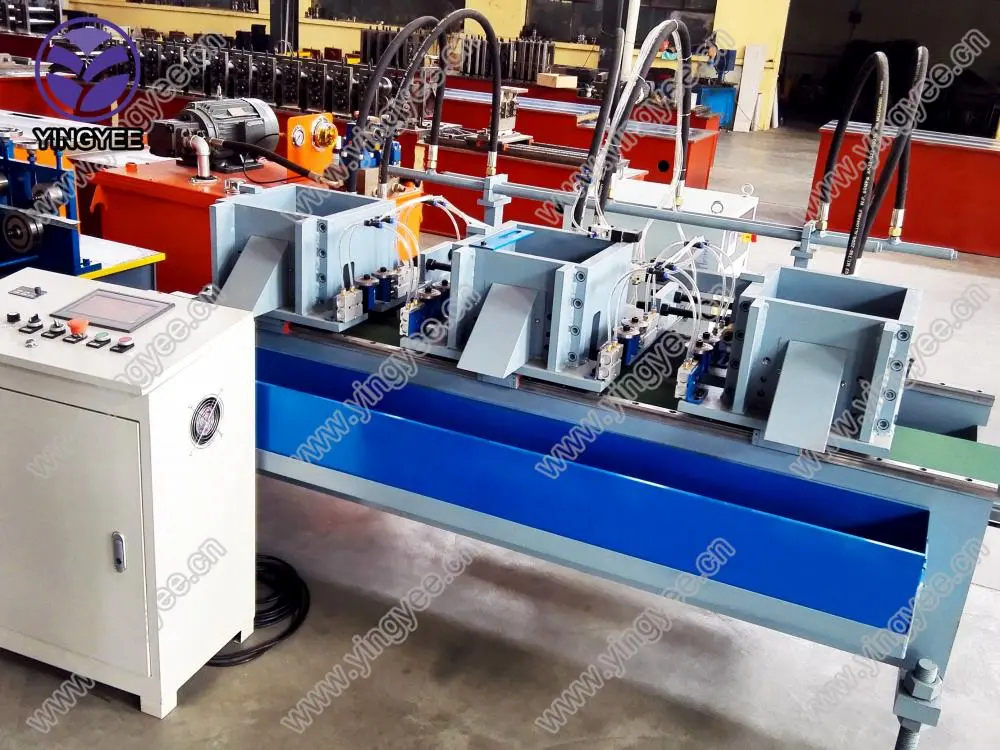The Evolution and Benefits of Metal Rolling Door Cold Forming Machines
In the world of manufacturing and construction, the demand for durable, secure, and aesthetically pleasing building materials has never been higher. Among these materials, metal rolling doors stand out due to their robustness and versatility. The advent of cold forming technology has revolutionized the production of these doors, making metal rolling door cold forming machines an essential asset for modern manufacturing processes.
What is a Metal Rolling Door Cold Forming Machine?
A metal rolling door cold forming machine is a specialized equipment designed to fabricate rolling doors through a cold forming process. Unlike traditional manufacturing methods that may require heating materials to shape them, cold forming uses high pressure and advanced tooling techniques to mold metal into precise profiles at room temperature. This process not only preserves the integrity of the metal but also enhances the door's strength and durability.
Advantages of Cold Forming
1. Material Efficiency One of the most significant benefits of cold forming is its material efficiency. The process reduces waste by utilizing the entire metal strip, as opposed to traditional milling methods that often generate substantial scrap. This not only lowers material costs but also promotes a more sustainable manufacturing approach.
2. Strength and Durability Cold forming increases the yield strength of metals. The deformation process involved in cold forming aligns the metal’s crystalline structure, resulting in a product that can withstand higher loads and pressures. For rolling doors subjected to external elements, this enhanced strength means longer-lasting security and protection.

3. Precision and Consistency Metal rolling door cold forming machines are renowned for their ability to produce highly precise and consistent profiles. Advanced computer numerical control (CNC) technology ensures that each door maintains uniformity, which is crucial for installation and aesthetic appeal. This consistency reduces the likelihood of errors, decreasing production time and costs.
4. Customization The cold forming process allows for a high degree of customization. Manufacturers can easily adjust the machine settings to create various door sizes, designs, and finishes according to customer specifications. This flexibility is essential in catering to the diverse needs of different industries, from retail to industrial sectors.
5. Rapid Production Rates The automation involved in modern metal rolling door cold forming machines significantly speeds up production rates. High-speed operation coupled with reduced manual labor translates to quicker turnaround times for clients, enhancing overall operational efficiency.
Applications of Metal Rolling Doors
Metal rolling doors are widely utilized in various applications, including warehouses, commercial buildings, garages, and factories. Their robust design helps protect against theft and damage while providing ease of access. With the ability to customize these doors, clients can select features such as insulation and fire resistance, which are vital for certain environments.
Conclusion
As industries continue to evolve, so does the technology that supports their infrastructure. Metal rolling door cold forming machines represent a significant advancement in manufacturing, offering numerous advantages such as material efficiency, strength, and rapid production. As businesses seek ways to improve their operational efficiencies and product offerings, investing in cold forming technology for metal rolling doors presents a viable solution. Ultimately, the evolution of this technology not only contributes to improved manufacturing practices but also assures customers of quality and security in their commercial spaces. Embracing these innovations paves the way for a sustainable and prosperous future in building and construction.